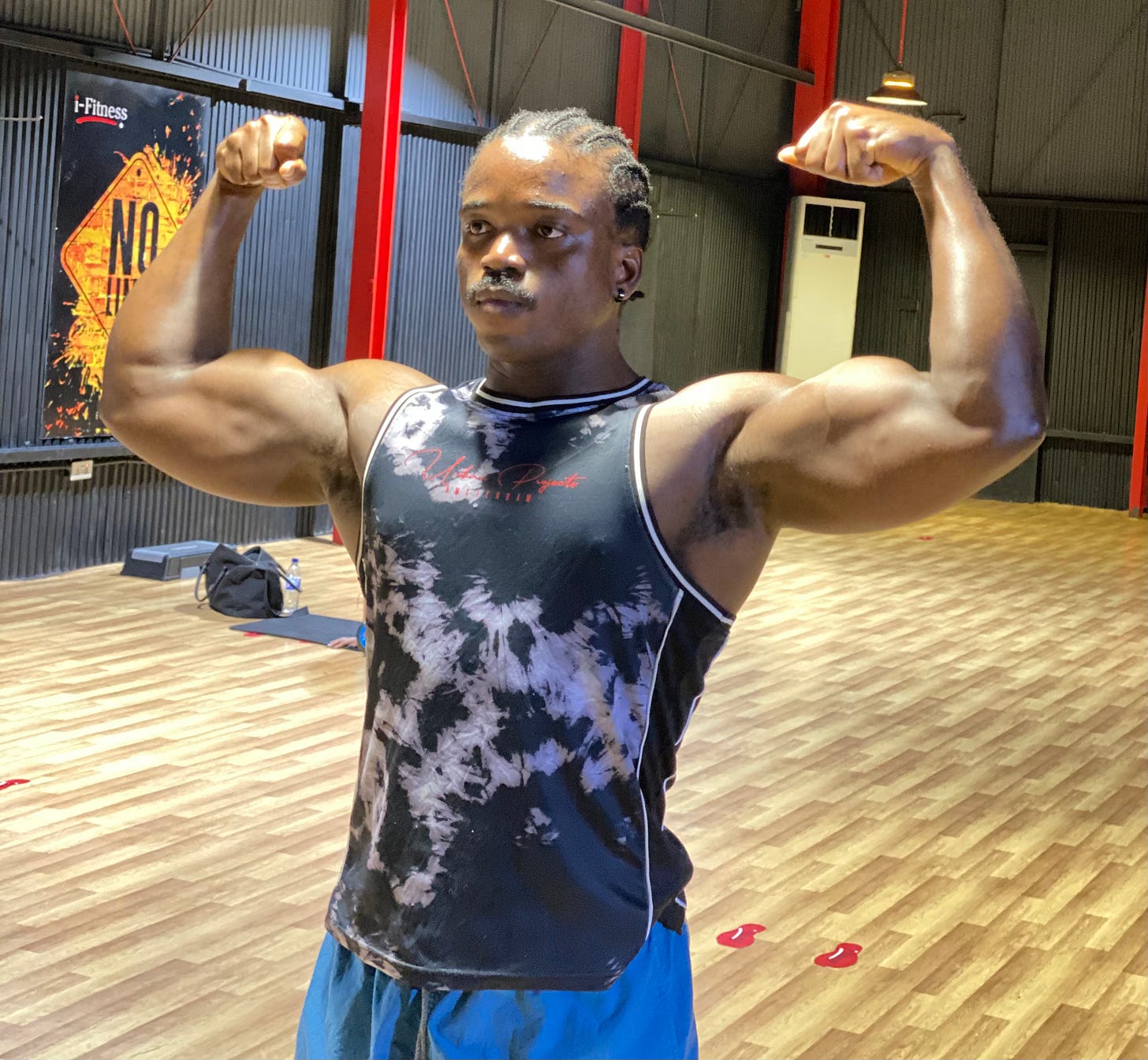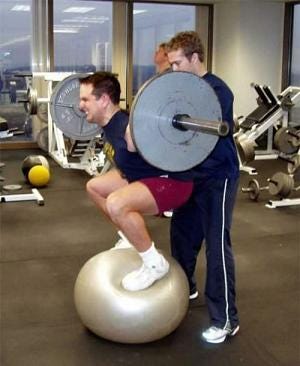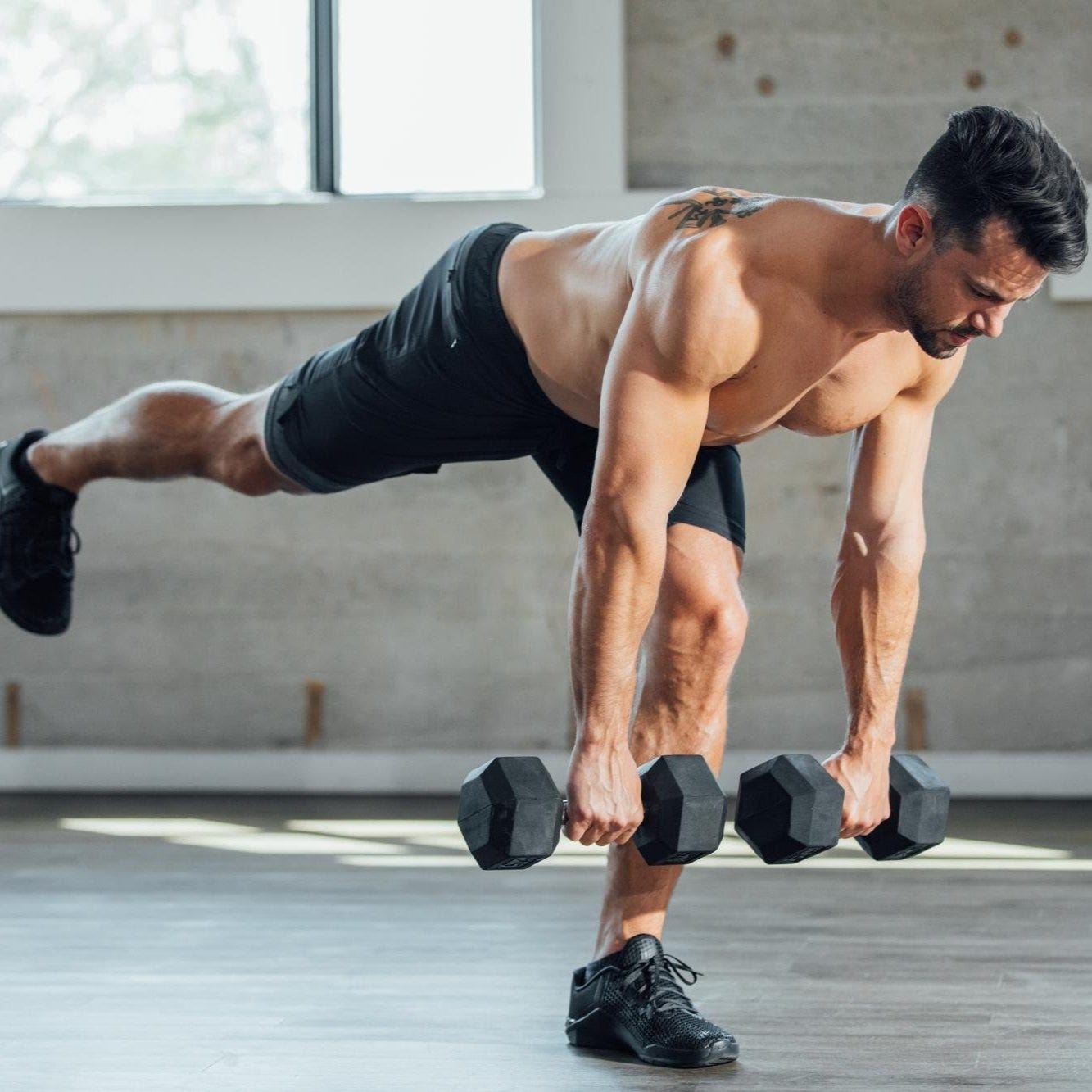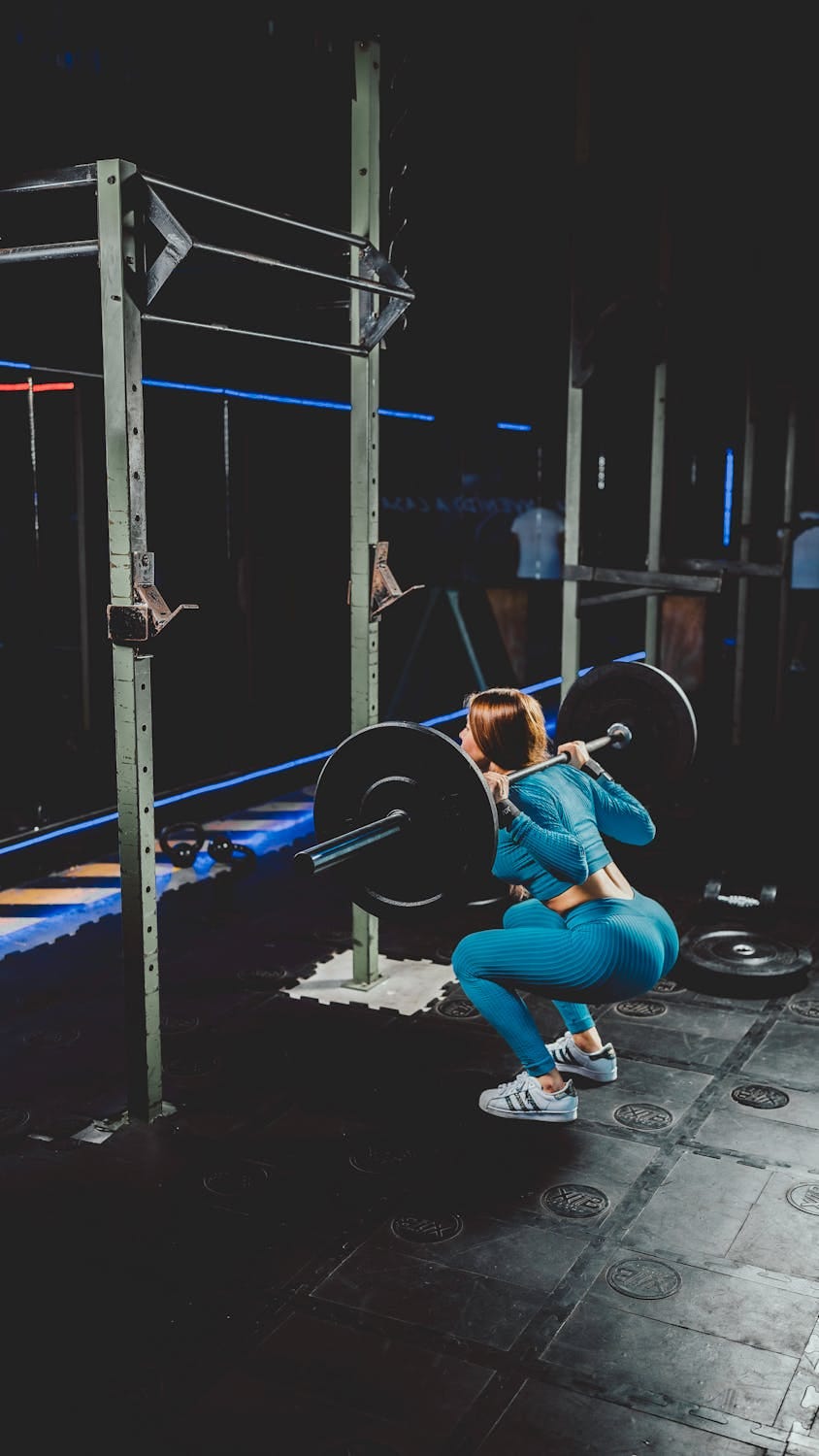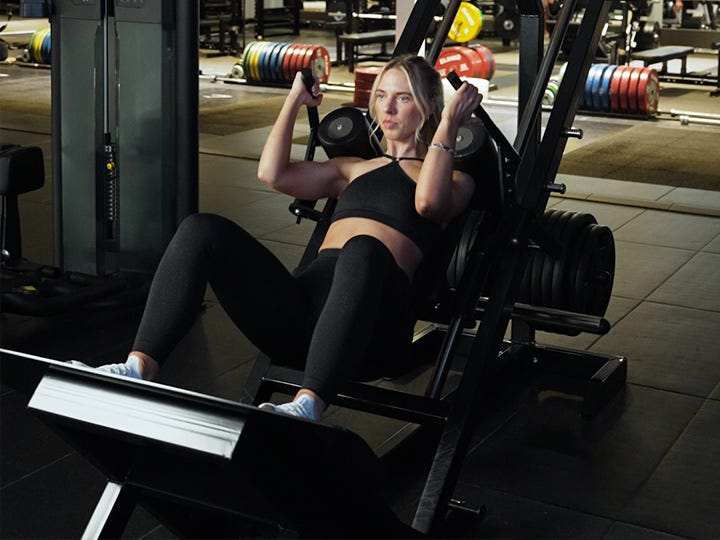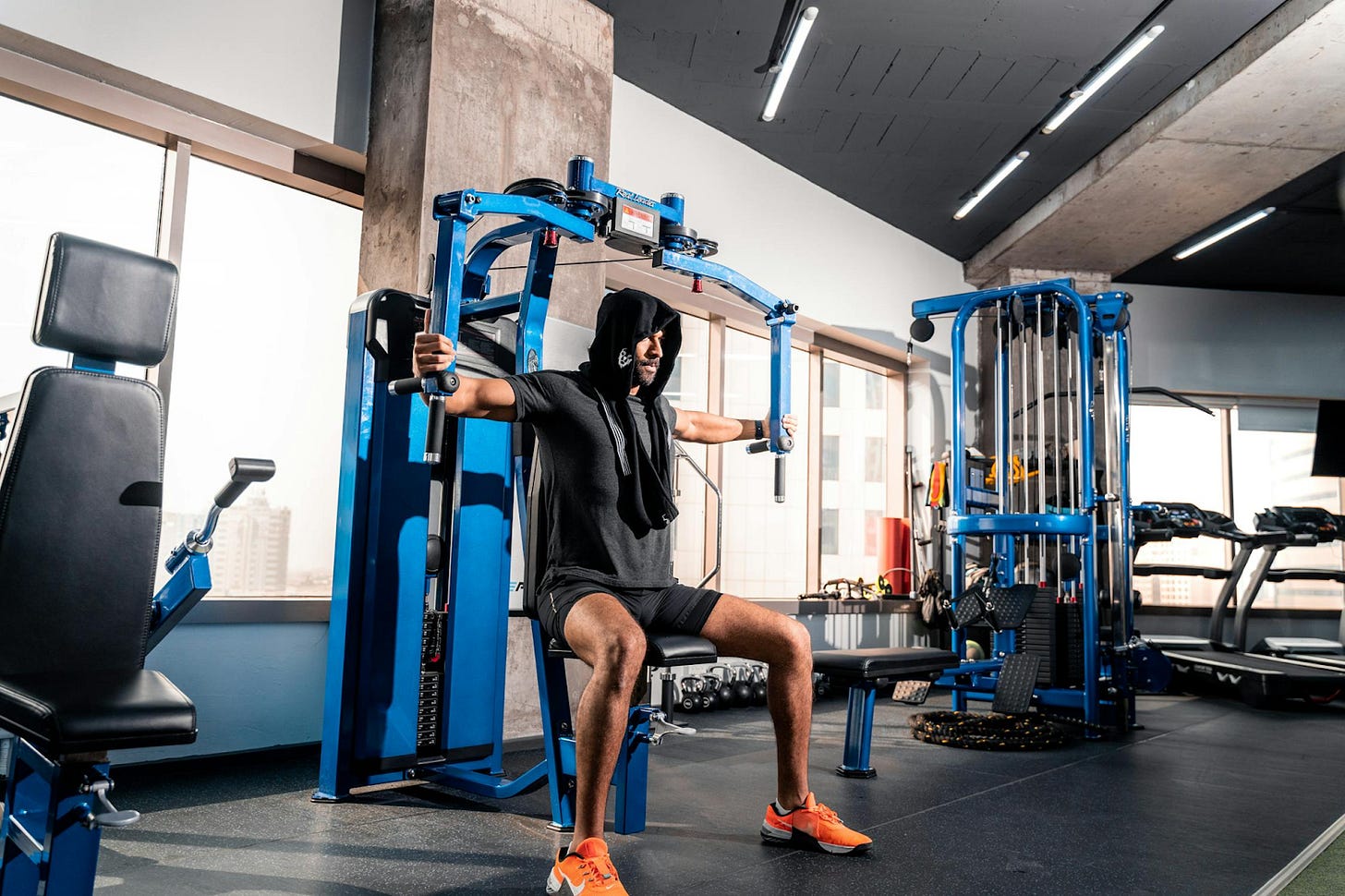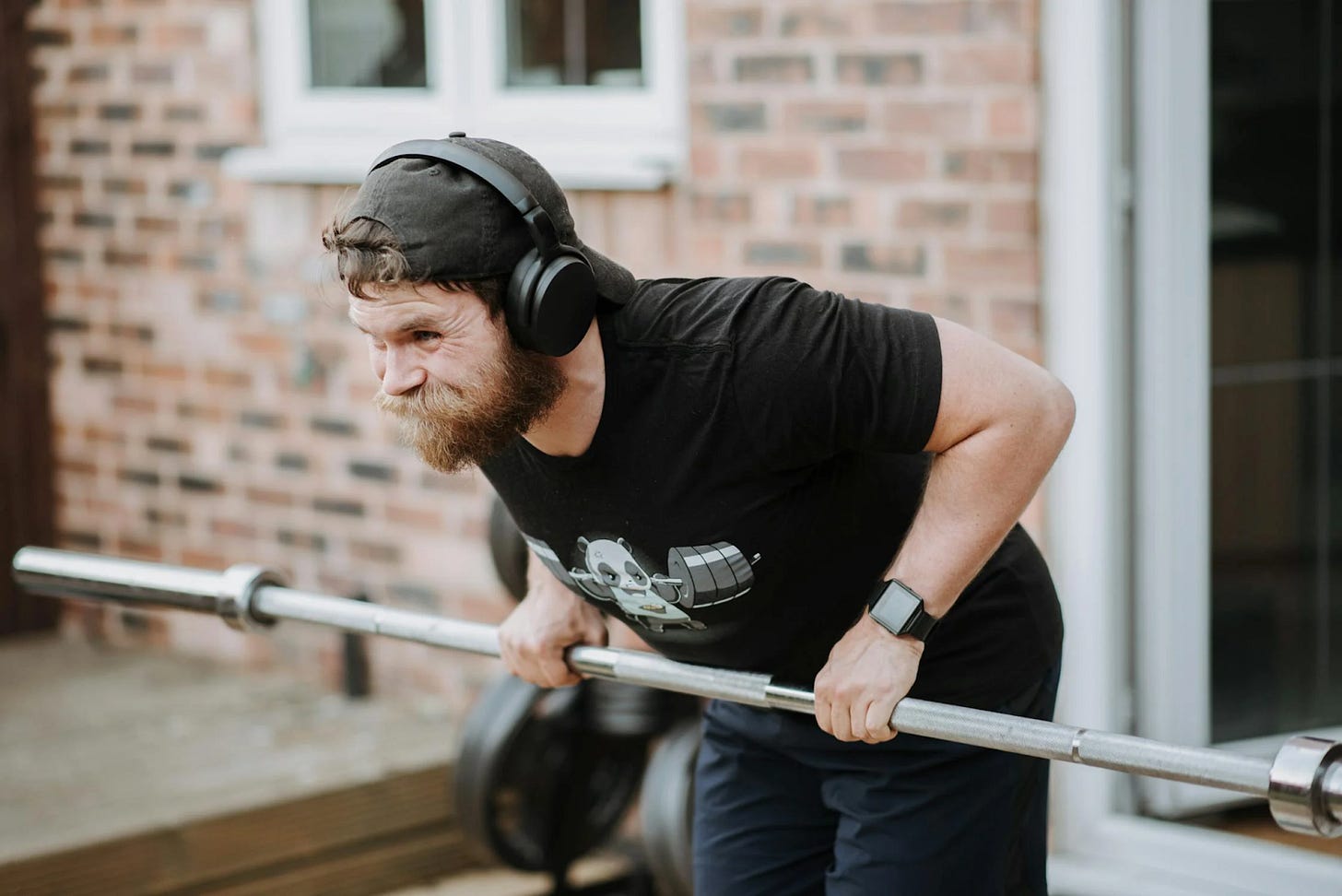What Exercises Should I Do in the Gym? II
Find out how to pick the right exercises for the best results.
In the first part of this post, I talked about four factors that can help you pick the best exercises for the best muscle and strength gain results. In the second part, I'm talking about a few more factors.
Here's a warning: After reading this guide and implementing the advice here, your body might change drastically, and you might start to suffer the consequences of having a great physique. Don't say I didn't warn you.
Now that you've gotten the disclaimer, let's get to it! I've outlined the remaining factors for you.
5. Stability and Loading
Does this exercise allow me to stay balanced so that I can just focus on lifting heavy weights? That's the question you should ask yourself when implementing this factor in making exercise choices.
Why do you need to stay balanced? Optimal muscle and strength gain during resistance training requires intensity. Your workouts have to be intense if you want to grow, and this intensity comes in the form of lifting heavy weights (load) and taking sets close to failure. You can't do either of these things properly if you are not stable throughout a set.
If an exercise does not allow for balance, lifting heavy loads would be difficult or impossible because you'd likely fall or the weight would fall off. The same goes for taking sets to failure. You can't take a set to failure if you're not balanced because you could fall or lose your standing before the targeted muscle gets fatigued (reaches failure).
An obvious example of an exercise that is not stable is barbell squats on a medicine ball. If you try to lift heavy on this exercise, you'll fall and get injured. Even if you don't lift heavy, you'll likely lose balance before you get any set near failure.
A less obvious example of an unstable exercise is one-leg RDL. Because you only have one leg on the floor and the other suspended, you are not balanced, and that takes some focus away from the hamstrings and glutes you're trying to target.
As you stand with one leg, instead of all your focus going to cues that will help make the exercise more effective, some of that focus is redirected to ensure you don't fall over. Also, because of this lack of balance, the weight you use for this exercise can't be heavy, or it'll just increase your chances of falling over.
An even less obvious example is barbell squats. Yes, simple, traditional barbell squats. Barbell squats are a good exercise for building muscle and strength in the legs, but they do not give you the best stability. Why? You have to focus on balancing the bar on your upper back, and this takes away some of the focus that you would have otherwise directed to your legs.
Because of this lack of balance, you also can't lift as much weight during barbell squats as you can on leg presses, hack squats, pendulum squats, or smith-machine squats. So yes, everyone swears by barbell squats, but we can agree that there are more stable options, especially if muscle growth is the priority.
Remember, however, that stability is just one factor you should consider, and everything is relative. If you like squatting, it's not a bad exercise in the end. It's "effective" and it suits your "preference." It is also "available" in most gyms, as opposed to more sophisticated machines, and you can "progressively overload" it. You can see that it aligns all the factors that I have outlined in Part 1. Onto the next!
6. Exercise Setup
"How easy is it to set up the physical conditions for performing this exercise?" is the question you ask when considering this factor. For example, performing chest flyes on a cable machine with a bench might be more difficult to set up than just using a chest fly machine.
Here's another example: You might find it easier to simply do barbell squats than to do Bulgarian split squats. Why? Creating the setup for Bulgarian split squats may be difficult.
\You have to arrange a bench or a stool and make sure the angle is perfect. You may also need to hold onto something for support as you squat with one leg. In a barbell squat, on the other hand, all you need are the bar and a squat rack. You can just get under the weight and squat.
Sometimes, arranging the physical conditions for an exercise might be so difficult that it feels like more work than the actual workout itself. This situation is a valid reason not to do an exercise.
Other times, an exercise may be difficult to set up, but you really like it. Because you like it, you go through the pain of setting it up. In this case, your "preference" for that exercise beats the "exercise setup" factor. Just another reminder that you should apply all these factors together, including the one discussed in Part 1, and they don't work alone.
7. Joint Health
When trying to judge an exercise based on this factor, here's what you need to ask yourself, "Are there alternatives to this exercise that don't hurt my joints as much?" There are many reasons why your joints could hurt during or after an exercise, and one of them is that the exercise forces your joints to move in unnatural paths.
For example, during a bench press, a certain degree of elbow flare may be dangerous and cause elbow and shoulder pain. When, however, you compare the dumbbell (DB) bench press to the barbell bench press, you realize that the DB variation is safer and easier on the joints.
DB presses allow you some control in moving each arm freely. The barbell bench press, on the other hand, can be restrictive because the straight bar does not give you a lot of control over elbow flare and shoulder positioning. As people get older, they tend to move more to DB presses because they're safer on the elbow and shoulder joints.
Another example for joint health is stiff-leg deadlifts with dumbbells and stiff-leg deadlifts with barbells. Using dumbbells for this exercise is likely to be more comfortable on your shoulder joints because they allow your shoulders and arms to relax and stay by your side while bend and raise your torso.
Using a bar on the other hand, forces your hands to come out to the front, and if you're not careful, the weight could pull on your shoulders in an uncomfortable way, especially if you're lifting very heavy weights. I pull 160 kilos on stiff-leg deadlifts on the bar for around 8 to 13 reps, and I still feel more comfortable when I use dumbbells.
If you feel pain during an exercise and, after doing some research, you find that you're not doing anything wrong in relation to form, it might be best to change the exercise to something that is easier on your joints.
8. Stimulus-to-Fatigue Ratio
I promise this term is not as technical as it sounds. The stimulus-to-fatigue ratio is a comparison of how much an exercise facilitates muscle and strength growth to how much fatigue it produces.
What is stimulus? In this case, stimulus refers to the actions that drive adaptations for muscle growth. That you're moving objects and directing them toward certain muscle groups is going to provide a stimulus for that muscle to grow. However, not all stimuli are the same. Some stimuli are more fatiguing than others.
Here's the thing: If you lift weights and you lift them with intensity, it will take a toll on your body (fatigue). But some exercises are more difficult than others in the sense that they cause more fatigue.
How do you know that an exercise causes a lot of fatigue? One way to know this is that you have to put a lot of mental effort into preparing for the exercise. Of course, you have to use mental effort for all exercises. If you train properly, every exercise is difficult. However, some exercises require a lot more mental effort than others. Those exercises will likely have a higher stimulus-to-fatigue ratio.
Another way to know how fatiguing an exercise is is how it impacts your ability to perform other unrelated exercises in the same training session. For example, if you do a set of hack squats, performing a set of heavy barbell rows right after would not be easy. You would probably not lift as heavy as you normally would on the rows. Why? You just performed some intense hack squats.
Let's say you did leg extensions instead of hack squats. You'd find that the rows would be much easier because leg extensions are not nearly as fatiguing as hack squats.
In incorporating this factor, the advice is not to avoid difficult exercises. Rather, the question to ask yourself is, "Are there alternatives to this exercise that provide a similar stimulus but don't make me as fatigued as this one does?
Remember, you only have so much energy and mental fortitude, and the reason you work out is to achieve certain results. If there was a way to achieve a result while expending less of your limited mental and physical resources, shouldn't you take it?
Honorable Mention - Range of Motion
Range of motion is not one of the most important factors in muscle and strength gain. There are more important things like training to or close to failure, progressive overload, and nutrition. However, working your muscles through their required range of motion is great for joint health. It also teaches you to perform an exercise with good form and helps you avoid injury.
Range of motion is dependent on context and will likely vary from exercise to exercise. For example, a dumbbell bench press will allow for more range of motion than a barbell bench press. Also, some machines may not allow for a full range of motion, especially for tall people or people with very long limbs.
When choosing exercises, it's best to choose the ones that allow for as much range of motion as possible. But as I said before, it is not a very important factor in exercise selection. So, here's a better way to think about range of motion: Whatever exercise you choose, make sure to use as much range of motion as it provides.
If you choose a hack squat, try to go as low as you can without removing your lower back from the pad. If you choose a lat pulldown, try to stretch your lats as much as the machine allows you on the way up. There are no arbitrary range of motion rules. Everything in this area requires context, so determine the best way to use range of motion based on your situation.
What To Remember
In the end, you have to find a balance between what works and what works for you. An exercise may be a great option based on one factor, and it may be a bad option based on another factor. Exercise selection is relative, and how you choose exercises should be based on specific situations, rather than the application of arbitrary rules.
One more thing! Regardless of what exercises you choose or prefer, remember that the goal is to train with intensity and ensure that the muscles you're targeting get as much stimulus as possible. These rules are important if you want your training to be as effective as possible. So, while you apply the factors outlined in this post, remember them.
If you found this helpful, and you're not subscribed to Let the Gains Begin, you'll miss out on a ton of useful information that you can apply to your workouts and nutrition for great results. So, hit the link below and type in your email address. It'll only take a second.
Don't forget your training partners and gym friends, too. Don't hoard the gains. Disperse them! There's more than enough to go around. Share this post.
You'll hear from me again in a few days. Until then, enjoy the gains!


